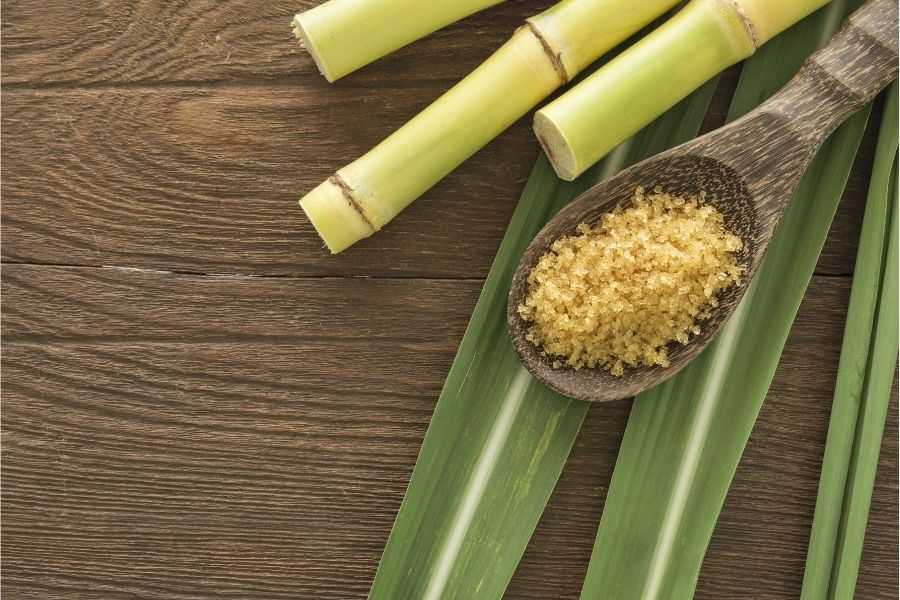The Scientific Research Behind Cane Sugar Processing: Exactly How Sweet Taste is Refined
The Scientific Research Behind Cane Sugar Processing: Exactly How Sweet Taste is Refined
Blog Article
Understanding the Critical Techniques and Technologies Used in Modern Cane Sugar Handling
The advancement of cane sugar handling has actually been substantially shaped by the assimilation of sophisticated methods and modern technologies that resolve both effectiveness and sustainability. As we explore these important advancements, it becomes crucial to examine just how they not just improve production but also align with broader sector patterns and consumer needs, elevating questions regarding the future of sugar handling and its ramifications for international markets.
Historical Context of Walking Stick Sugar Handling
The historical context of cane sugar processing exposes an abundant tapestry of agricultural advancement and social exchange that has actually formed its development over centuries. The process of refining and extracting sugar gained momentum in India, where methods for crystallization were developed around the Sixth century.
:max_bytes(150000):strip_icc()/ms-sugar-getty-cfed0662acca49f7b6e52c593767dfb9.jpg)
Advanced Removal Techniques
Efficiency in walking stick sugar removal has actually seen considerable improvements, driven by the demand for greater returns and reduced manufacturing costs. This strategy not only raises sugar yield yet likewise decreases the power needed for processing.
Furthermore, the fostering of membrane layer filtration innovations, such as nanofiltration and turn around osmosis, has reinvented the separation of sugar from pollutants. These approaches allow for the discerning permeation of sugar particles while preserving larger pollutants, improving the removal procedure and decreasing waste.
In addition, the integration of continuous extraction systems has caused improved operational efficiency. Cane Sugar Processing. These systems keep a continuous circulation of cane product, making sure optimal extraction conditions and lowering downtime associated with batch processing
Cutting-edge Refining Technologies
Refining methods in cane sugar processing have actually undergone a transformative change, driven by the demand for higher pureness and improved item top quality. Among the most notable innovations is the fostering of membrane purification modern technologies, such as ultrafiltration and nanofiltration. These processes successfully get rid of pollutants and colorants without the demand for considerable chemical therapies, thus protecting the sugar's natural taste and enhancing its charm.
An additional significant innovation is the usage of ion exchange resins, which permit careful elimination of undesirable ions from sugar options. This technology not only boosts the general pureness of the last product yet likewise adds to minimized waste and environmental influence.
Additionally, advancements in adsorption techniques, utilizing triggered carbon and other advanced products, have actually shown reliable in decolorizing sugar services while preserving ideal high quality. The assimilation of these cutting-edge refining modern technologies makes certain that makers can create refined sugar with superior clarity and preference, satisfying the advancing preferences of consumers.
Automation and Control Systems
Recent innovations in refining innovations have actually paved the way for significant enhancements in automation and control systems within cane sugar handling facilities. These systems make use of advanced software application and equipment to improve functional effectiveness, minimize human mistake, and make sure constant product top that site quality.
Modern automation integrates numerous elements, consisting of sensors, actuators, and programmable logic controllers (PLCs), allowing real-time tracking and control of vital procedures. For instance, temperature level, flow, and stress rates can be specifically regulated throughout removal, information, and formation phases, optimizing efficiency and decreasing waste.
Furthermore, advanced information analytics and artificial intelligence algorithms play a critical function in anticipating maintenance, permitting drivers to anticipate devices failings prior to they happen. This positive method not only minimizes downtime however additionally expands the life-span of machinery.
Furthermore, automation assists in the application of Industry 4.0 principles, encouraging sugar mills to achieve greater connectivity and data exchange throughout processes. Consequently, decision-making becomes more dexterous and educated, inevitably improving the total competitiveness of cane sugar production. With these advancements, the sector is well-positioned to fulfill growing international demands while maintaining operational excellence.
Sustainability Practices in Sugar Production
Sustainability practices in sugar production have ended up being significantly vital as the sector looks for to balance economic feasibility with environmental duty. As customer recognition expands relating to the ecological impacts of agricultural practices, sugar producers are embracing innovative techniques to minimize their environmental impact.
One substantial method is the execution of accuracy agriculture techniques, which use information analytics to enhance source usage, such as water and plant foods. This lowers waste and reduces the effect on neighborhood ecological communities. In addition, many manufacturers are transitioning to renewable power sources, such as biomass from sugarcane byproducts, to power their procedures, thus reducing dependence on nonrenewable fuel sources.
Water management techniques are likewise critical; rainwater harvesting and efficient watering systems help mitigate water scarcity problems. Cane Sugar Processing. a knockout post In addition, integrated parasite management methods minimize chemical use, promoting biodiversity and soil wellness
Business social responsibility efforts are arising, with companies purchasing regional communities and ensuring reasonable labor techniques. By embracing these sustainability methods, the sugar market not only boosts its credibility yet additionally adds to a more lasting agricultural landscape, leading the way for future generations.

Verdict
In recap, modern-day cane sugar processing incorporates an array of sophisticated methods and innovations that substantially improve sustainability, efficiency, and yield. Collectively, these improvements place the cane sugar sector to meet modern demands while addressing critical worldwide challenges.
The evolution of walking cane sugar processing has been dramatically shaped by the combination of advanced methods and technologies that deal with both effectiveness and sustainability.The historical context of walking cane sugar processing exposes a rich tapestry of farming innovation and cultural exchange click site that has actually shaped its development over centuries. Innovations in milling and refining emerged, laying the foundation for modern-day cane sugar processing.Refining methods in walking stick sugar processing have actually undertaken a transformative shift, driven by the need for higher pureness and boosted product quality.In recap, modern-day walking stick sugar handling incorporates a variety of advanced techniques and technologies that substantially boost effectiveness, return, and sustainability.
Report this page